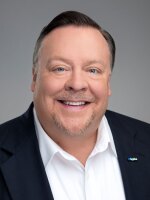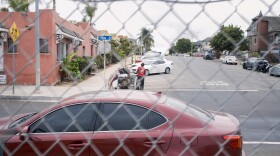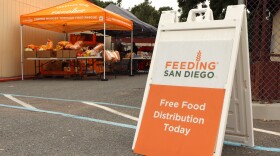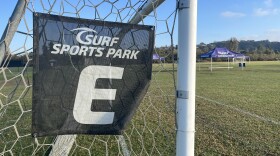Speaker 1: (00:00)
Who would have thought sewage would be of any value, especially in the fight against COVID. Well, scientists at UC San Diego are now using it to detect the presence of the Alma Cron variant early. Joining me to explain just how this all works is smoothie. Karthikeyan postdoctoral researcher at UC San Diego school of medicine and lead on the wastewater screening project smoothie. Welcome.
Speaker 2: (00:25)
Thank you for having me. So
Speaker 1: (00:26)
First, what is the significance of sewage in the fight against COVID
Speaker 2: (00:30)
And when the pandemic first started and there were not enough testing rates, but there were high prevalence rates. We have to somehow keep up with tracking the actual or true infection dynamics. This is specifically important because now we know people who are asymptomatic or presymptomatic instill spread the virus to other people. So sewage is, um, agnostic in that way. So anyone who's infected can potentially shed the virus in their stool in respect to of, um, the disease severity. So looking for the star scope to vital loads and the RNA, the sewage will essentially give us a snapshot of how well a community is doing in terms of SARS cov, two infection.
Speaker 1: (01:12)
How much sooner would you be able to detect the Omicron variant by testing wastewater than through, you know, a regular, no swab test? For example,
Speaker 2: (01:21)
It actually just depends on how frequently or how intensively we're testing for in, um, for instance, with the alpha and the Delta variance, we actually picked both of them up about two weeks ahead in our wastewater. Then we saw them in our clinical swabs. The main advantage sewage offers is that it does not depend on someone actually going to get tested or choosing to get tested. And it's very likely that someone who does not think they have symptoms would be potentially infected. And there's no chance that, you know, someone who is not showing any symptoms is actually walling triggered. Are you going to go get tested unless they think they've been exposed, but wastewater will pick that signal up no matter what, whether you're choosing to get tested or not. If you're infected, we'll still pick it up in the wastewater.
Speaker 1: (02:08)
So at this point, you've not picked up any of the Omicron variant in your samples.
Speaker 2: (02:14)
That is correct, but however, we haven't sequenced the latest samples yet, and those are going on the next week and this week. So our samples range from the entire idea of UC San Diego campus. In addition to that, we also get wastewater samples from a bunch of different schools around the San Diego school districts. And in addition, we also sample the San Diego counties, Maine wastewater treatment plant at point Loma that wastewater treatment plant aggregates waste or sewage from the entire San Diego county, which captures about two and a half million residents. So that one gives us a bigger picture of what are the main lineages or variants of concerns circling in the entire San Diego county. And, um, our, um, data so far has shown that, um, the wastewater actually provides a really accurate estimate of the relative abundances or proportions of the circulating lineages with a lot of times the new or emerging variants appearing in water ahead of our clinical detection.
Speaker 1: (03:17)
So tell me, how does this work? How do you all actually collect the wastewater?
Speaker 2: (03:22)
So we have, um, wastewater sampling robots that are placed at manholes, our sewer systems throughout campus, for instance, um, UCFC has about 130 of these auto samplers that are programmed to collect, um, wastewater at every given interval. So we can program them to collect every 15 minutes throughout the day, and then it collects it in a bottle and stores it. So that next day we just pick up these bottles and screened for the SARS cov two viral RNA in them. So in campus we have about 360 campus buildings that are covered by our base water program. So in essence, the entirety of UC San Diego campus is covered by the Reese water surveillance program. And we screen for the source code to RNA every day in all of these buildings. And every time we see a positive, we alert the building's residents saying that someone there is potentially infected and they sh they should go get tested.
Speaker 2: (04:18)
Once that person is identified, they're moved to an isolation dorm. So this is something that is being done every day. So we sample in the morning and we get the results of the evening. So within the same day, we can notify the buildings that have a potential infected individual in them. And this is especially important because we don't have any mandated testing, um, testing policies on campus, because most of them are vaccinated at this point. So unless someone gets a notification saying, um, there was a wastewater positive, it's very unlikely that they're going to go and, um, seek our clinical testing for the county. We do the same thing. We pick up wastewater samples every day, five days a week from the school districts. These are all school elementary schools and middle schools distributed across the San Diego county. And we screen for the Sanchez group to viral RNA in the samples as well. And every time we find a positive, the alert, the principals of those schools, so they can notify the staff and the parents of the students who are in that school on that day.
Speaker 1: (05:20)
How helpful has this method of detection for the presence of COVID been in the past
Speaker 2: (05:25)
Extremely effective, because a lot of times, if it gives you a good lead time, that gives the public health enough time to adjust our interventions accordingly on campus, especially it enabled the detection of 85% of our campus infected individuals earlier than what clinical or diagnostic testing would have done.
Speaker 1: (05:46)
And so at this point, no detection of Omicron here, but given another week, we may have a different picture.
Speaker 2: (05:53)
That is correct. So we're still processing samples from this week. So yeah, it could all change quickly.
Speaker 1: (05:59)
I've been speaking with Smithy, Karthikeyan postdoctoral researcher at UC San Diego school of medicine and lead on the wastewater screening project. Some Ruthie, thank you so much for joining us.
Speaker 2: (06:11)
Your walk I'm hope you have a wonderful day.






